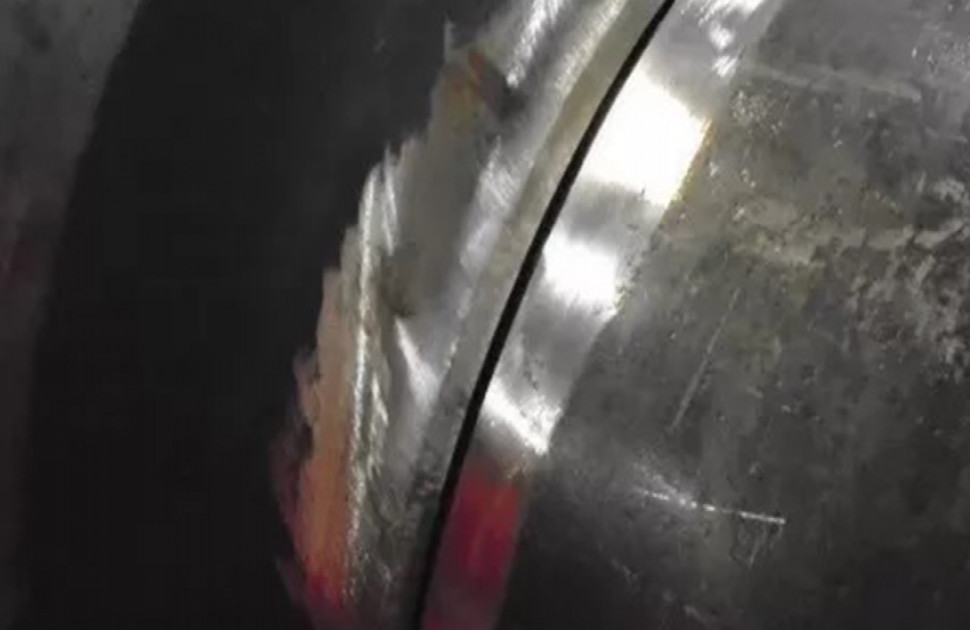Leading Factors to Pick Expert Welding Inspection Milwaukee Services
Leading Factors to Pick Expert Welding Inspection Milwaukee Services
Blog Article

Discovering the Various Techniques and Requirements of Welding Inspection for Getting Conformity and Reliability in Design Applications
The value of welding evaluation in engineering applications can not be overemphasized, as it serves as an important safeguard for ensuring structural stability and compliance with market standards. Different techniques, consisting of aesthetic assessment and advanced non-destructive testing techniques, give important insights right into the quality of welds. Adherence to well established governing criteria such as those from AWS and ASME establishes a framework for liability and excellence. However, the landscape of welding evaluation is continually progressing, motivating a closer evaluation of arising practices and their implications for design reliability. What might these advancements require for future tasks?
Significance of Welding Evaluation
Welding inspection plays a critical role in guaranteeing the integrity and security of welded frameworks. This procedure includes the systematic examination of welds to verify conformity with established requirements and specs. The significance of welding examination can not be overemphasized, as it works as a guard against potential failures that can arise from poor welding methods. Through strenuous examination, issues such as splits, spaces, and inadequate fusion can be identified early, thus avoiding devastating failures that may result in structural collapse or security threats.
Moreover, welding examination is crucial for preserving quality control throughout the welding process. It makes certain that the welds satisfy the necessary mechanical and physical homes required for their designated applications. Routine assessments also foster a culture of liability and continuous enhancement within welding procedures, encouraging adherence to ideal practices and market criteria.
In regulated markets such as production, aerospace, and construction, rigid welding inspection procedures are mandated to adhere to legal and safety demands. Inevitably, effective welding evaluation not only shields human life and residential or commercial property yet also enhances the durability and dependability of welded frameworks, making it an essential facet of engineering and building and construction.

Typical Welding Examination Techniques
A variety of evaluation techniques are used to examine the quality and stability of welds, each customized to detect particular sorts of issues. Among one of the most common methods is aesthetic assessment, which includes an extensive exam of the weld surface area to identify noticeable defects such as cracks, undercuts, and poor fusion. This approach is often the very first action in the examination process because of its simplicity and cost-effectiveness.
Another extensively utilized technique is radiographic evaluation, where X-rays or gamma rays permeate the weld to disclose inner flaws. This method is especially effective for spotting porosity and incorporations within the weld material. Similarly, ultrasonic screening employs high-frequency audio waves to identify inner defects, offering a comprehensive analysis of the weld's stability.
In addition, magnetic bit examination is made use of for ferromagnetic products, allowing for the discovery of surface area and near-surface problems by using electromagnetic fields and observing bit patterns. Finally, color penetrant screening includes using a fluid dye to the weld surface area, exposing cracks and various other stoppages upon examination. Each of these approaches plays an essential duty in guaranteeing weld top quality and conformity with industry requirements
Non-Destructive Examining Methods
Non-destructive screening (NDT) techniques are necessary devices in the assessment of weld top quality, allowing examiners to evaluate the integrity of bonded joints without triggering damages to the materials. Different NDT methods are employed to determine potential problems, making sure that welds fulfill the needed requirements for security and efficiency.
One of the most prevalent techniques is ultrasonic testing (UT), which utilizes high-frequency sound waves to spot interior defects such as spaces or fractures. Radiographic testing (RT) utilizes X-rays or gamma rays to create pictures of welds, exposing any type of stoppages within the product. Magnetic bit screening (MT) is efficient for finding surface area and near-surface defects in ferromagnetic materials through the application of magnetic fields and contrasting particles.
Liquid penetrant testing (PT) is another widely made use of approach that entails using a color to the surface area of the weld, which permeates into any fractures, making them visible under ultraviolet light. Each of these techniques supplies special benefits and constraints, and the option of an appropriate technique is crucial to achieving precise analyses of weld integrity. Eventually, the execution of NDT methods considerably adds to the dependability and safety and security of design applications.

Regulatory Standards and Conformity
In the realm of welding you can try this out inspection, adherence to regulatory requirements and compliance is paramount to make certain the safety and security and integrity of welded structures (Welding Inspection Milwaukee). Different organizations, including the American Welding Culture (AWS), the American Society of Mechanical Designers (ASME), and the International Organization for Standardization (ISO), have developed guidelines that govern welding techniques and examination treatments. These standards supply a structure for top quality guarantee, describing the required certifications for examiners and the methods for examining weld honesty
Conformity with these regulative standards not only boosts the structural integrity of welded assemblies yet likewise minimizes threats connected with failures, which can have tragic repercussions. Inspections need to be executed using defined procedures, consisting of visual, ultrasonic, and radiographic methods, to make sure that welds fulfill defined requirements.
In addition, adherence to these criteria is usually required by law, especially in sectors such as aerospace, manufacturing, and construction. Normal audits and qualifications are vital to preserve compliance, thus cultivating a culture of security and top quality within companies. Ultimately, governing requirements and compliance act as the foundation of dependable have a peek at this website welding inspection methods, guaranteeing that engineered structures meet both performance assumptions and safety demands.
Finest Practices for Welding Examination
While keeping compliance with regulatory criteria is critical, applying ideal techniques for welding inspection additionally improves the security and stability of bonded structures. Reliable welding inspection starts with complete planning, that includes recognizing the certain requirements of each task and making sure inspectors are well-trained in relevant approaches and standards.
Making use of a detailed assessment list helps to make certain all crucial aspects are examined, such as weld dimension, penetration, and visual defects. Non-destructive screening (NDT) methods, such as radiographic or ultrasonic testing, should be employed where ideal, providing a much more comprehensive assessment of weld high quality without endangering the integrity of the products.
Documentation plays a substantial function in best methods; preserving precise records of inspections, including photos, examination results, and conformity records, guarantees accountability and helps with future evaluations. Additionally, cultivating a culture of open communication in between welders and inspectors can bring about very early identification our website of potential problems, promoting immediate corrective actions.
Conclusion
In summary, the execution of extensive welding examination approaches and adherence to developed requirements are crucial for making sure compliance and integrity in design applications - Welding Inspection Milwaukee. Strategies such as visual evaluation, radiographic testing, and ultrasonic screening act as crucial devices in determining problems and preserving high quality guarantee. By promoting a culture of accountability and excellence, organizations can boost the stability and long life of welded structures, eventually adding to the safety and security and efficiency of engineering projects
Different methods, consisting of aesthetic examination and progressed non-destructive testing strategies, offer important insights right into the top quality of welds.Welding assessment plays a crucial function in making certain the honesty and safety and security of bonded structures.A selection of examination approaches are used to assess the top quality and stability of welds, each tailored to identify details types of flaws.One more commonly made use of method is radiographic examination, where X-rays or gamma rays penetrate the weld to disclose interior issues.In the realm of welding inspection, adherence to governing standards and compliance is paramount to guarantee the security and integrity of bonded structures.
Report this page